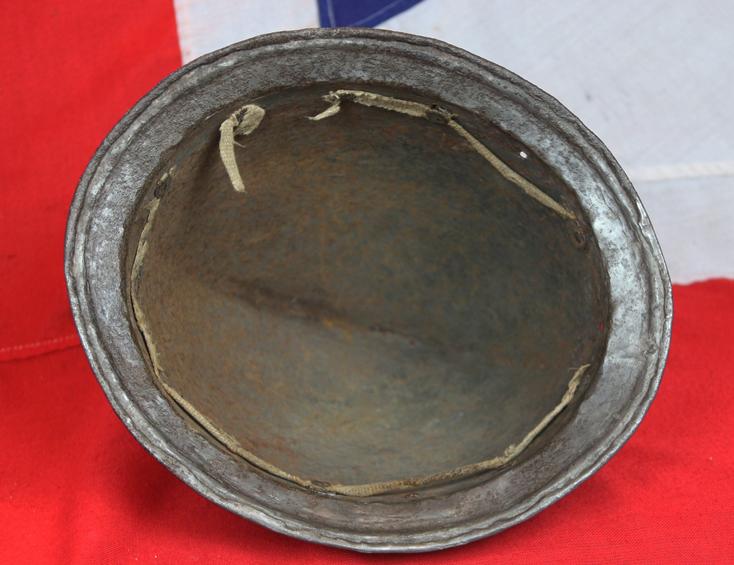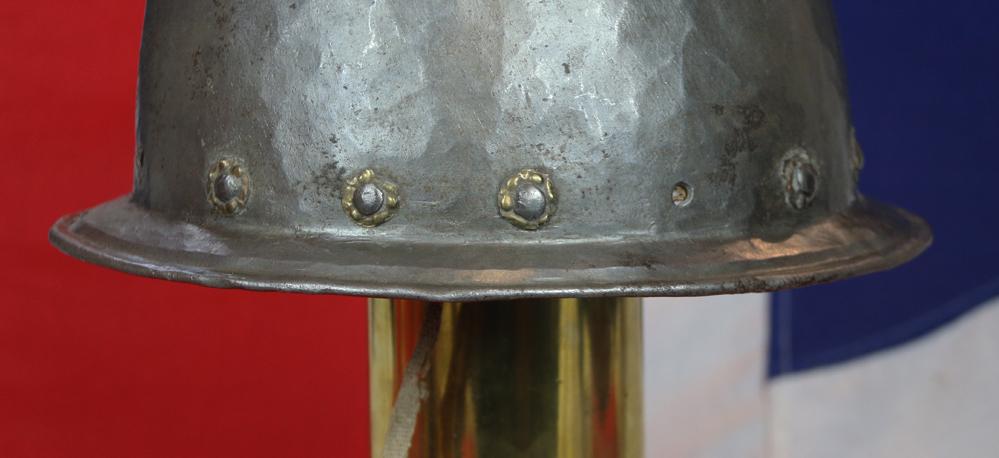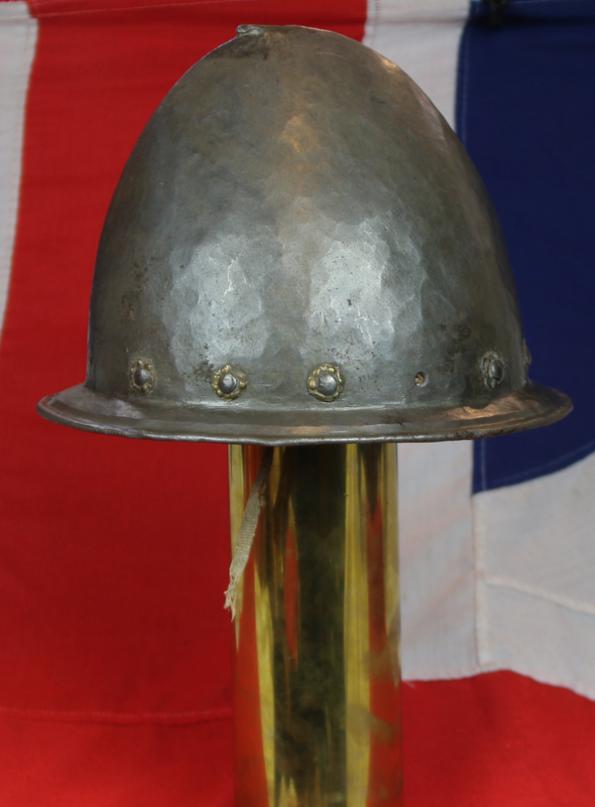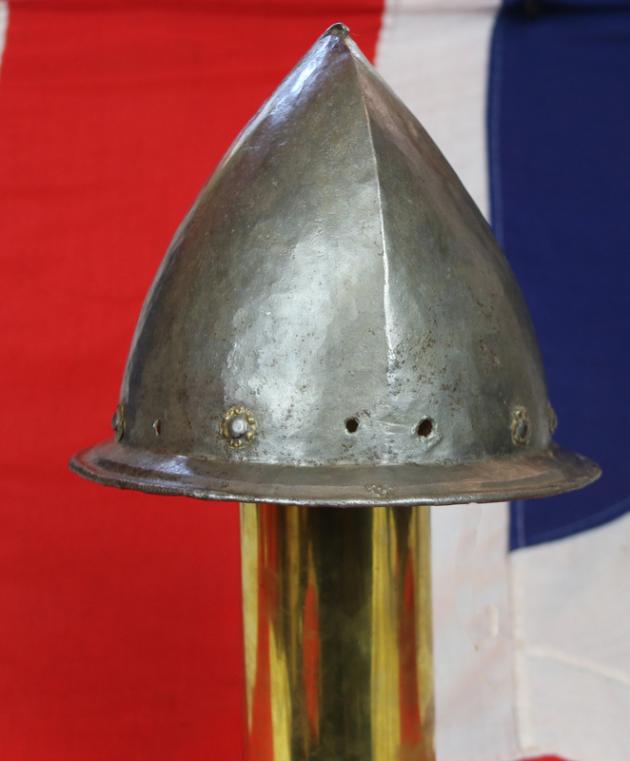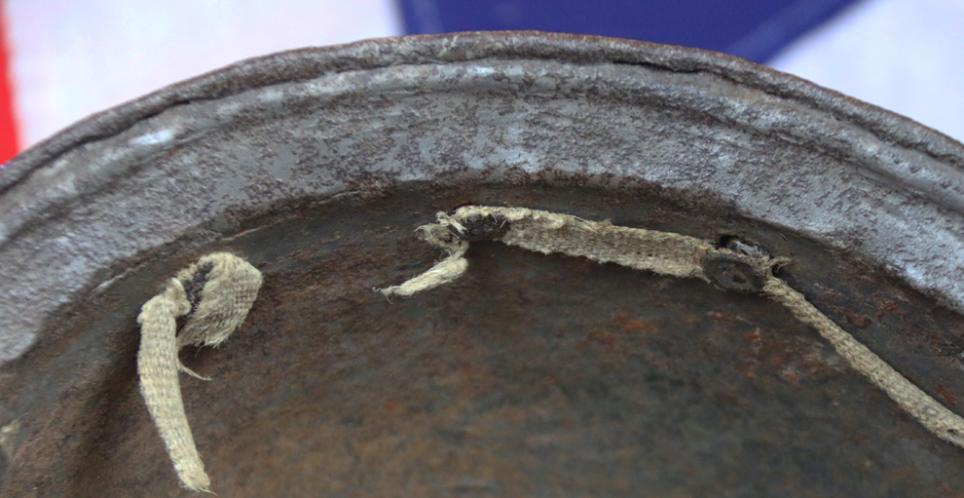Good Heavy Original Italian Infantry Papal Army Helmet Cabasset c.1570 From The Papal Armoury
Good Heavy Italian Infantry Helmet Cabasset c.1570, hammered steel raised from a single plate, medial ridge with pear stalk finial, border retains its original brass rosettes (2 missing) each embossed with a ring of 6 stars, stepped flared brim with turned over edge, retaining original linen lining band inside. 19cms tall. Good condition. Provenance: The
Papal Armoury; and London dealers Fenton & Sons Ltd. Fenton and Sons, Antique Arms and Armour, traded in London from 1894-1927. and supplied, amongst others, the British Museum. [Interesting aside, we used to supply them, [Fentons] in the 1920's]. This and a few others were acquired by Fentons in 1919 and were listed in their catalogue. They were all from the Papal Armoury in Rome made for the Barberini family.
The Barberinis supplied the armour and cabassets for the papal army in the late 16th century, a period fraught with anarchy and bandits and direct attacks on papal territories by Parma. The close association led to Maffeo Barberini becoming Pope Urban VIII. His brother Taddeo was made Supreme Commander of the Papal Army. The helmets, including this one, were from the papal armoury and served through the papal wars. It is estimated that about 4500 men served the papal army and most would have worn cabassets, making the original number of the group well over 4000. Others from the group are now in the Musio Storico Vaticano the Old Papal armoury now in the Vatican Historical Museum in the Lateran Palace, Rome. The Papal Army was the loosely-construed army of volunteers and mercenaries in the service of the Italian Papal States, active from the 8th century until the capture of Rome by Italy in 1870. The Papal States maintained a sizeable military during the Middle Ages, using it to fight against the Holy Roman Empire and its Ghibelline allies. During the 1300s, the Papal States began to employ the services of condottieri, mercenaries who sold their services to the extremely wealthy Catholic Church. These forces would be instrumental to the defence of the Pope during the Italian Wars of the 15th and 16th centuries, with Cesare Borgia leading the Papal Army on a campaign of conquest that added several new city-states and regions to the Papal States' territories. Painting in the gallery of the Massacre of San Bartolome in the Catholic-Protestant Religious Wars, where the French crown aided by Queen Catherine de Medici, mother of the French King, with the Pope's blessing, slaughtered ten of thousands of Huguenots what is considered the second deadliest religious war in European history (surpassed only by the Thirty Years' War, which took eight million European lives) The pope was so delighted with the massacre he ordered a Te Deum to be sung as a special thanksgiving (a practice continued for many years after) and had a medal struck with the motto Ugonottorum strages, (Latin: " slaughter of the Huguenots 1572"
Code: 23583
1995.00 GBP




